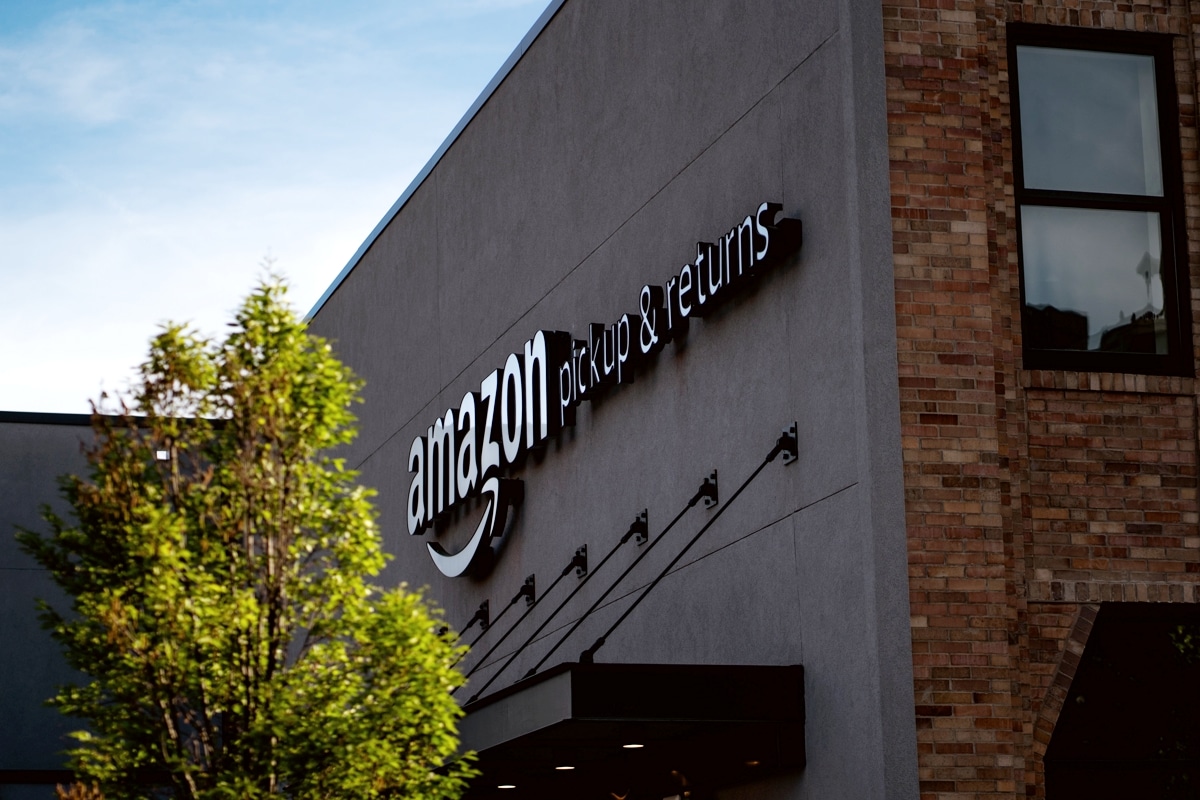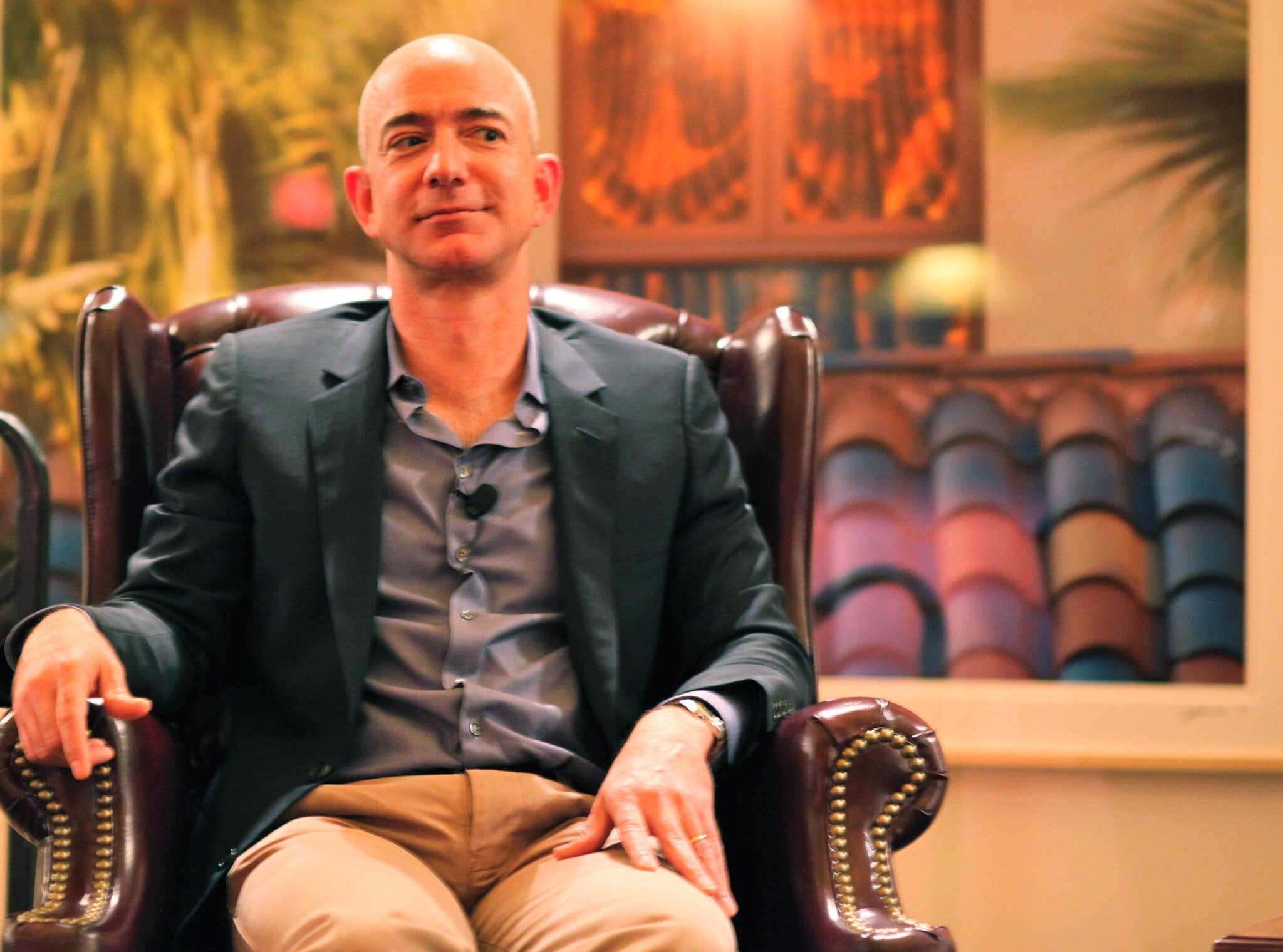A simplistic analysis of Jeff Bezos’ Amazon corporation might simply point to its 2016 $136 billion revenue or its 2019 $280.52 billion revenue.
Match that with its ever-expanding high growth, a diversified empire of products, services and business segments, and realize that this company is nothing but a modern monopoly, or just a mere titan of industry (Stambor, 2020).
That would distort the fact that Jeff Bezos is principally a man of vision, in both his thoughts on and beyond, perhaps to cities in space.
His sophisticated Amazonian business process has a proven strategy entailed with company principles, such as being obsessed with the customer, making their employee their number one priority, and the two-pizza development team (Berkinshaw & Duke, 2015; Foer, 2019).
It is the long-term strategy, the cost-cutting techniques, the invest-it-all in growth, the Amazon business principles and the utilization of big data created by the e-commerce ‘everything store’ website that propelled Amazon on such a high growth trajectory since 1994 (Berkinshaw & Duke, 2015).
Its diversification into many different types of businesses that ultimately it would integrate into its core competencies would allow it to create an enormously lucrative ecosystem.
At this point, this ecosystem makes so much money, and is such a powerful influence on the American and therefore world economy, that it has seemed to beat out the competing Apple, Facebook, Google and Microsoft.
Amazon has formed a business ecosystem that would dominate the technology-driven world of the internet (Burns, 2014).
Key strategies Amazon employed to achieve growth in the past 23 years

One of the hallmarks of Bezos successful strategy with Amazon was his do everything right by the present guidelines of how to be a successful entrepreneur in the E-Business age.
From the start of Amazon’s founding in 1994, he would have an excellent technique to determine a market strategy as opposed to a product strategy in assessing the development of how to resolve a problem into a solution.
The problem was which product would best take advantage of his famous 1994 perception that the internet was an extremely high growth medium due to its fantastic usage rate of increase (Foer, 2019). His technique was to consider 20 different product categories, analyzing books as the most attractive (Birkinshaw & Duke, 2015).
To fund his Amazon’s initial foray into business by selling books, Bezos came up with $1 million from family and friends (Birkinshaw & Duke, 2015). Subsequently, he got funded by the prestigious and wealthy Silicon Valley venture capital firm Kleiner Perkins (Birkinshaw & Duke, 2015).
This venture capital allowed him to employ a strategy of offering online 1 million titles of books, while the competition at most only sold 150,000 titles (Birkinshaw & Duke, 2015).
The ‘on-demand’ strategy employed was so successful that Amazon’s sales reached $875,000 by April 1996, doubling each quarter to $16 million in the first quarter of 1997 (Birkinshaw & Duke, 2015).
Bezos described his corporate strategy as: “GBF: Get Big Fast.” (Birkinshaw & Duke,2015).
This emphasis on size allowed the company to have bargaining power with suppliers, quickly become a world-class brand, amortize high fixed costs due to a large customer base, and have a fine-tuned approach to achieving market share.
In Q2 1997, Amazon went public, raising $42 million, with Bezos owning 42% of the company (Birkinshaw & Duke, 2015). The end of 1997 revenues of $147 million was good enough to keep Bezos long term strategy afloat, despite losses of $35 million (Birkinshaw & Duke, 2015).
Eventually, this calculated risk would pay off, with Amazon turning a profit in Q4 of 2001 (Birkinshaw & Duke, 2015).
At the time, this was very impressive, as most dot-coms went down (went out of business) when the bubble burst in April 2000.
This forward-thinking strategy was a testament to the fact that Bezos steered his company much the way other dot-coms a couple of years after the bust does.
The kind of practices and strategies employed by Jeff Bezos is academically classic, and standard practises today, remaining stable with very high growth.
Amazon at this point had four years of single-minded focus on growth, and two years exclusively spent on cutting costs, while at some point balancing cost improvement and growth, making it possible to lower costs and drive growth, according to Bezos (Birkinshaw & Duke, 2015).
According to Amazon’s annual reports, by 2013, they had a net income of $274 million (Birkinshaw & Duke, 2015).

As sales at Amazon topped $90 billion by 2015, Bezos summarized his business philosophy in four points.
The first point
Amazon was obsessed with satisfying customers as opposed to worrying about the competition (Berkinshaw & Duke, 2015).
It allows the most customer-centric business on earth (according to them) to work on differentiated products and take a long-term view (Berkinshaw & Duke, 2015).
This view relates to his low-price, low-margin strategy. Bezos doesn’t worry about margin because he aims to win the customer’s trust.
If a product doesn’t sell, he’ll drop it.
The second point
Bezos insists Amazon has an innovative culture in which employees are encouraged to look out for new business opportunities (Birkinshaw & Duke,2015).
One former employee describes the structure as relying on cross-functional teams (Birkinshaw & Duke, 2015).
Many significant projects developed this way have failed, but the successes were so significant that they greatly outweighed the failures.
The third point
Amazon would take a long-term view of 5 to 7 years to development projects (Birkinshaw & Duke,2015).
This price of admission would warrant them the extremely lucrative differentiated products instead of the me-too variety.
Differentiated products are often essential to any high growth business today.
The fourth point
No matter how far Amazon had come, Bezos would always retain the startup culture he had when he started in the 1990s (Birkinshaw & Duke, 2015).
Former employee Jason Crawford says it best:
Amazon never rests on its laurels, nor do they fall prey to the age-old idea that everything has been invented already. Bezos always has his eye on the future and sees an ever-expanding path ahead. Whenever asked where Amazon is, or where the industry is, or how far any of it has left to go, he replies: It’s still day one.” (Birkinshaw & Duke, 2015, p14)
Conclusion
Strategies employed
Metrics of a successful, contemporary business strategy are that it delivers high value to the consumer or it is a lucrative, high growth enterprise for the founder and other stockholders.
In the case of Amazon, we can add these two, plus the strategy that long term growth is sought and attained, and that this gets done in such a way as to maintain this high growth by using practices that have become textbook cases for economists and PhD’s to base much of their career on (Foer, 2019).
An example of these textbook cases is the two-pizza teamwork development dictated by Amazon’s principles (Foer, 2019).
In a further examination of why Bezos strategies are so effective, we take a closer look at where he was just before the launch of Amazon.
Bezos graduated from Princeton University with a degree in electrical engineering and computer science, earning a 4.2 GPA (Deutschman, 2004).
This summa cum laude degree shows that he is really smart, explaining part of the reason he can lead his company so well with innovative, and technically flawless techniques.
Further, the experience with the Wall Street hedge fund, with its highly innovative head who was way ahead of the game with the internet, taught him many of the strategies he would later employ in his company (Foer, 2019).
Briefly, besides the other strategies outlined here, Amazon had a significant emphasis on diversification, developing everything from the cloud service, Amazon Web Services to artificial intelligence in its Alexa Echo machines.

Amazon Web Services got a seven-year head start on all the competition by being the only cloud service at these years (Birkinshaw & Duke, 2015).
It was an immensely profitable company.
Eventually, this business segment won the highly prestigious Central Intelligence Agency contract (Foer, 2019). After that, everyone wanted their cloud service with Amazon.
As noted in detail here, Amazon pursued a strategy of diversification to try to be the dominant player in the race for E-Business global market ecosystems against the four companies mentioned. Though the jury may still be out on this one, it may be that Amazon is winning this endeavor.
In terms of revenue, one cannot argue that Amazon is the winner. Still, if we carefully project the success of its networking strategy, we may be able to statistically predict that it will eventually come out with a global ecosystem that will be bigger and more powerful than the rest by a very considerable margin.

The last metric of success mentioned is that of fulfilling the aspirations and dreams of the founder of Amazon.
Jeff Bezos has an ongoing fascination with futuristic things, such as science fiction he has read, Star Trek and some of the science fiction entertainment developed by his movie studio segment.
According to him, someday, the earth will run out of energy supplies, and humankind will have to emigrate to the stars (Foer, 2019).
In what Bezos calls his greatest achievement, Blue Origin, he intends for it to be someday involved with space cities that will help with a solution to the energy problem and provide a home for the world’s population in space (Foer, 2019).
Bezos ethos is such that it is a great thing to be long-term in the vision for the future, for both him and everyone else.
This long-term vision is undoubtedly a very profitable experience for the founder, as it allows him to have a sense of accomplishment about the distant future that has practically become the stuff of modern legends in the present day and age.
The promise of this distant future, and how that bears out on those drawn to it currently gives many people today a great source of spirituality, whether they are secular or not.
With the emphasis on science fiction becoming a reality in the literature of the fourth industrial revolution that we are undergoing now, the whole process of this sci-fi genre comes alive to the point where it is a tangible, non-abstract pursuit (Schwab, 2016).
From this, we can extrapolate that Bezos ability to fund the costly, $1 billion a year Blue Origin aerospace segment with the success of his strategies at Amazon to achieve some of his futuristic goals.
Possibly within his lifetime, we can see his dreams come true, a hallmark of the American Dream.
Missteps that occurred
The fact that the scope of Amazon’s empire is without precedent in American history suggests to some that the company is a form of monopoly.
Although any negative representation of Amazon is seemingly always held by it as false, the possibility of a monopoly, in this case, is genuine.
Another possible problem to be aware of is that Amazon wields so much power over a large swath of industry and consumers in its e-commerce offerings, that it may not show enough responsibility in this to honor this agenda.
It is hard to say if Amazon is responsible in terms of the power it wields. Yet, perhaps the American government may determine either through the courts or the regulatory agencies whether it is a monopoly.
Perhaps it is a mistake to be as large as Amazon is with their business model.
Future strategies for Bezos to continue growth

(Image source: Flickr)
There doesn’t seem to be anything that Amazon could do to continue growth any more than they already do.
Amazon’s leader Bezos is committed to the strategy that something new can always g invented, and he has myriad, proven strategies that work well.
Bezos might want to work on ensuring that his corporation becomes the dominant global ecosystem player of the five corporations mentioned.
The reason this paper sees his corporation as the probable winner of this aspiration is its ability to diversify successfully to an extremely high degree, and its ability to move on this goal with the same textbook making entrepreneurship that made the corporation so successful.
A bold move for Amazon that Bezos might undertake is to be more generous with his philanthropy and divest a substantial amount of his assets to a charitable foundation in the same way that Bill Gates did.
Most of all, though, it could be thought that Bezos should take heart that he is a modern titan of industry, in the sense of making a high income for himself and his stockholders.
Perhaps just as significant, he created incredible value for his customers and the general public as well.
Bezos has confidence in his future with Amazon because his business strength is in being prescient and knowing how to apply this to business strategy.
Author

Marc Wolsky was awarded an honorary membership in the International Society of Poets in 1995, and a 2008 Outstanding Achievement in Poetry Crystal Award. He has corresponded with many faculty of top universities who have written to him concerning his various perspectives expressed on Academia.edu. Currently, he works at Freenet Digital, which is “an established world provider of mobile content and entertainment services, … a lot of other exciting and very diverse projects.”
References
Birkinshaw, J., & Duke, L. (2015, October). Amazon.com: Staying a step ahead. LBS Ref: CS-13-016. London. London Business School.
Burns, P. (2014). New Venture Creation: A Framework for Entrepreneurial Start-Ups. NewYork. Palgrave Macmillan.
Deutschman, A. (2004, August 1). Inside the Mind of Jeff Bezos. Fast Company. https://www.fastcompany.com/50541/inside-mind-jeff-bezos-4
Foer, F. (2019, November). Jeff Bezos’s Master Plan. The Atlantic. https://www.theatlantic.com/magazine/archive/2019/11/what-jeff-bezos-wants/598363/
Schwab, K. (2016). The Fourth Industrial Revolution. New York. Penguin Random House.
Stambor, Z. (2020, January 30). Amazon’s 2019 sales rise 20.5%. Digital Commerce 360. https://www.digitalcommerce360.com/article/amazon-sales/





